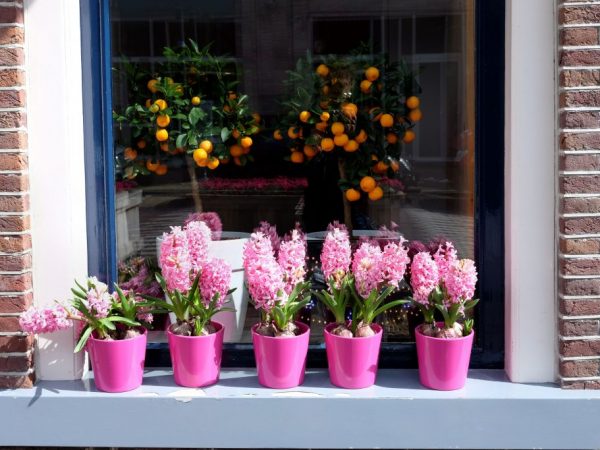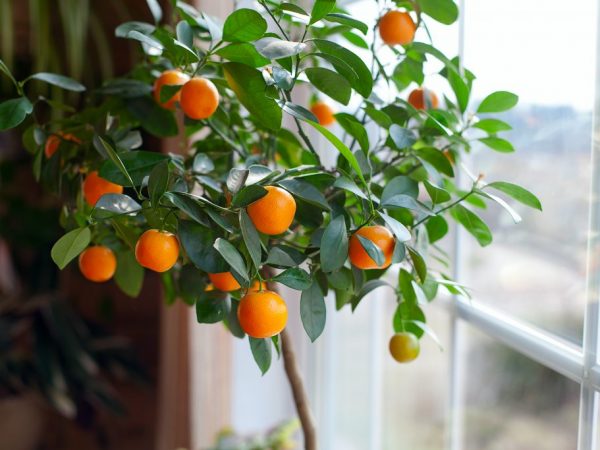Growing an orange tree
The orange tree is an evergreen that is grown and propagated by cuttings or by grafting or seeds. Caring for an orange tree at home includes providing optimal lighting, temperature and humidity in the air and soil.

Growing an orange tree
Growing from seeds
The seeds are removed from a ripe orange and inspected for stains. For the successful germination of seeds, they must be dried, but before that they are washed under running water and cleaned of pulp. The seeds are then soaked in a small glass containing warm water overnight.
The seeds are laid out on a damp paper towel and covered with the same, then the towel is placed in a sealed zip bag, which should be kept at a temperature of 22 to 24 ° C. The paper is periodically moistened because the seeds must not be allowed to dry. After about two weeks, the latter ripen and are transplanted into sterile soil for germination and rooting. Transplant carefully to successfully root the young sprout.
Growing from a bone
At home, an orange can be grown from seeds. For this, healthy seeds capable of reproduction are extracted (this is indicated by the correct shape and not dried tissues), then they are thoroughly cleaned of pulp, washed and soaked in water for 10-12 hours.
A suitable soil is purchased in a specialized store or prepared with peat, sand, turf soil (ratio 1: 1: 2).
- The seeds are sown into small containers with a volume of 0.1 l, separate for each young shoot, or into a common box at a distance of 5-7 cm.
- Planting depth should not exceed 1 cm.
- After the seed is immersed in the soil, it is watered a little, the pot is covered with a film and transferred to a dark place until young plants appear.
- When the length of the shoots reaches 1.5-2 cm, 2 leaves will appear, the shoots are transplanted and rooted in a container with a diameter of 8-10 cm.
The transplant should be careful not to damage the roots. The plant should be taken care of correctly and the transplantation should take place according to a certain algorithm.
Conditions of detention
Indoor orange care:
- Lighting. Indoor orange is grown in a warm place, so a good place to grow is the southern window, which provides an abundance of ultraviolet rays from the sun. In the summer, the culture is placed in a place where there is access to open air, but no winds. An orange tree at home with a lack of solar radiation bears fruit with sour citrus fruits. In winter, provide artificial lighting that will extend the daylight hours.
- Temperature. The orange tree is cold hardy, but at low temperatures it bears fruit with a few sour oranges, so it is important to maintain a relatively high temperature.
- Humidity. The optimum humidity indicator in the apartment should be at least 40%.If it is lower, then the orange tree will inevitably shed its leaves and die. Avoid dry air during the heating season. In the fight against it, a bowl with moistened moss or expanded clay is placed next to a home-made orange tree. Excess moisture provokes rotting of the root system.
Fertilizers and watering

Prevent the soil from drying out
Once every two weeks, a room orange needs to be fed by fertilizing the soil.
Nitrogen stimulates the tree's vegetative growth and fruit formation. Phosphorus has a positive effect on orange yields. Potassium improves the quality of citrus fruits and increases the winter hardiness of the plant. Calcium is responsible for vegetative and generative growth. Fertilizing the substrate with these components is extremely important.
Other substances are also used for feeding: ash per 1 tsp / 1 l of water, crushed weeds, dry tea leaves or coffee grounds, sugar per 1 tsp / 1 tbsp. water, eggshell powder, and aquarium water.
Watering the plant is carried out as the surface layer of the earth dries up, its dryness is contraindicated. Before watering, the water must be defended for at least a day, because watering an orange with chlorine is extremely harmful.
Grafting features
A variety of species are grafted onto one citrus crop at the same time: oranges, lemons, tangerines, grapefruits, etc. A small sprout of any orange tree serves as a scion. It is important to cut the scion earlier so that there is a better chance of successful fusion. You can store the branch in the refrigerator for a long time by wrapping the lower tip in a wet cloth and placing the scion in a plastic bag.
The following is important for vaccination:
- the diameter of the scion and rootstock must match;
- the grafting procedure is carried out quickly by cuttings;
- all cuts are made with sharp instruments.
The most convenient method is copulation, in which the rootstock and the scion are connected, wrapped tightly with a special tape, then a plastic bag is put on the plant, which is tied at the bottom. The grafted orange is placed in a lighted and warm place, before growing, the bag is not removed for another 3 weeks.
Tree pruning
Indoor orange is pruned when it is actively growing so that it will then bear fruit abundantly. Without pruning the branches, the culture looks unkempt and does not bloom well, so it is important to care for the citrus.
During the flowering period, the tree does not need pruning, only remove excess growth.
Protection against diseases and pests
- Anthracnose is an extremely dangerous disease of fungal origin, in which the leaves and flowers turn yellow, curl and fall off, and a red pigmentation forms on the citrus fruits themselves. In the fight against infection, damaged shoots should be cut off and the plant is sprayed with fungicidal preparations.
- Wart affects leaves, fruits and young shoots. First, yellow spots appear on them, and then they become gray-pink warts. In order to avoid an epidemic, infected branches are removed, and the crown is treated with Bordeaux liquid.
- Hommosis is a pathology in which a red-brown spot is formed on the branches or trunk, which, as it dries, is replaced by gum. The infection appears when planting too deep, lack of a drainage layer, as well as an excess of nitrogen or a lack of phosphorus or potassium. The wounds are cleaned and treated with a solution of copper sulfate.
- Late blight is characterized by the formation of a dark oil ring on young trees. The protection is the same as for gommosis.
- The aphid feeds on the sap of the orange tree and attacks the flower, leaf, ovary and trunk. It is characterized by high fertility and appears up to twenty generations per season. To combat the parasite, a solution of household or green soap, garlic water, dichlorvos, a 3% solution of acetic acid or edible salt is used.
- The spider mite attacks the leaves, settles on their underside and feeds on plant sap, causing the death of organs. Control methods: placing under an ultraviolet lamp for two minutes, spraying with a solution of laundry soap, 96% alcohol solution, processing with Sulfaride paste.
- Mealybug manifests itself in a fluffy white bloom on the leaves and a general weakening of the plant, in which growth is significantly slowed down. For treatment, Intavir, Decis, Karbofos, etc. are used.
- The scutellum, when it appears on leaves and branches, forms oval bulges up to 5 mm in size. Signs: colorless sticky coating and drying of the leaf cover. Preparations: Aktara, Aktellik, Fitoverm. Also, wash the leaf plates with soapy water or tobacco tincture.
- The citrus nematode damages the potted root system and settles in it, feeding on protoplasm. For its destruction, they are treated with chemical preparations, the soil is enriched with organic fertilizers, and the roots are thermally treated with water.
Conclusion
Taking care of an orange tree growing in a pot is not difficult. It is worth creating suitable temperature conditions, long-term lighting and regular moisture supply so that it responds with beautiful lush foliage and tasty fruits.


